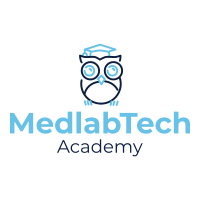1. Mastery of Phlebotomy Techniques
One of the first things employers want to know is your technical proficiency. Be sure to highlight your expertise in venipuncture (drawing blood from veins) and capillary techniques (collecting blood from smaller vessels). Mention any specialized equipment you’re experienced with, such as tourniquets, needles, and blood collection tubes. If you’ve received advanced training, especially from well-known programs like Phlebotomy Training Specialists, be sure to list it. This instantly signals to employers that you have the hands-on skills they’re looking for.
Pro Tip: Always provide specific examples of techniques you’ve mastered. It helps paint a clear picture of your capabilities.
2. Knowledge of Safety and Cleanliness Protocols
In phlebotomy, maintaining a sterile environment is crucial for both patient and worker safety. Employers will look for candidates who understand and follow proper safety guidelines, such as those set by OSHA (Occupational Safety and Health Administration). On your resume, emphasize your experience with sterilizing equipment, handling medical waste, and following infection control protocols. Your attention to detail in this area tells employers that you’re committed to maintaining a safe and hygienic workspace, which is non-negotiable in healthcare settings.
Pro Tip: Mention any specific safety courses or certifications you’ve completed to further demonstrate your dedication to patient and workplace safety.
3. Excellent Patient Interaction and Communication
Phlebotomists often work with patients who are anxious or afraid of needles, making patient interaction a key part of the job. Employers value candidates who can communicate clearly and calmly, helping patients feel at ease during the procedure. On your resume, highlight your ability to explain the blood draw process, provide reassurance, and maintain a compassionate demeanor. Exceptional interpersonal skills are just as important as technical abilities in making the patient experience a positive one.
Pro Tip: Include a brief example of how you’ve handled a nervous or difficult patient to demonstrate your communication skills in action.
4. Strong Record-Keeping and Data Entry Abilities
Accurate documentation is just as critical as performing the blood draw itself. Employers want to know that you can manage patient records and input data accurately. Be sure to list your experience with medical software and your ability to keep meticulous records. This shows that you’re not only skilled in phlebotomy but also reliable when it comes to handling the administrative side of the job.
Pro Tip: If you’ve worked with specific software systems, mention them by name. Familiarity with widely used systems can give you an edge.
5. Physical and Mental Stamina
Phlebotomy can be physically demanding, especially in busy healthcare environments where you may need to perform multiple blood draws in a short period. It’s important to showcase your physical stamina and ability to stay focused, even during long shifts. Employers are looking for candidates who can manage their workload efficiently without compromising the quality of care. Mention your ability to multitask and stay calm under pressure.
Pro Tip: Pair your physical stamina with examples of mental focus and efficiency, such as managing high patient volumes without sacrificing accuracy.
6. Problem-Solving and Adaptability
Every day in healthcare brings new challenges, and your ability to adapt and solve problems is a valuable asset. Whether you’ve dealt with hard-to-find veins, updated procedures, or unexpected situations, showing your adaptability demonstrates that you can think on your feet. Include examples of how you’ve overcome obstacles in previous roles, whether it’s finding a solution to a technical issue or providing exceptional patient care in challenging circumstances.
Pro Tip: Employers love concrete examples. Describe a specific situation where your quick thinking or adaptability made a difference.
7. Commitment to Continuing Education and Professional Growth
The medical field is constantly evolving, and employers want to know that you’re committed to staying current with new techniques and standards. Include any certifications, courses, or additional training you’ve completed to show that you’re serious about ongoing education. This not only highlights your expertise but also your dedication to providing the best possible care.
Pro Tip: If you’re pursuing or have completed advanced certifications in phlebotomy, be sure to mention them prominently.
8. Organizational Skills
Phlebotomists are often tasked with managing supplies, organizing schedules, and ensuring that blood samples are properly stored and transported. Highlight your organizational skills on your resume to show that you can manage these tasks efficiently. Whether it’s keeping track of inventory or scheduling patient appointments, employers want to know that you’re capable of running a smooth, orderly operation.
Pro Tip: Emphasize how your organizational skills have led to improvements in efficiency or patient care in your past roles.
Conclusion
By emphasizing these eight key skills on your resume, you position yourself as a well-rounded and highly capable phlebotomist. Whether it’s your technical proficiency, patient communication, or commitment to safety, each skill demonstrates that you have what it takes to excel in this vital healthcare role.
Looking to take your phlebotomy career even further? MedLabTech Academy offers a range of resources to help you sharpen your skills and stay ahead in the field. Explore our training guides, practice tests, and educational tools to continue your professional growth.

